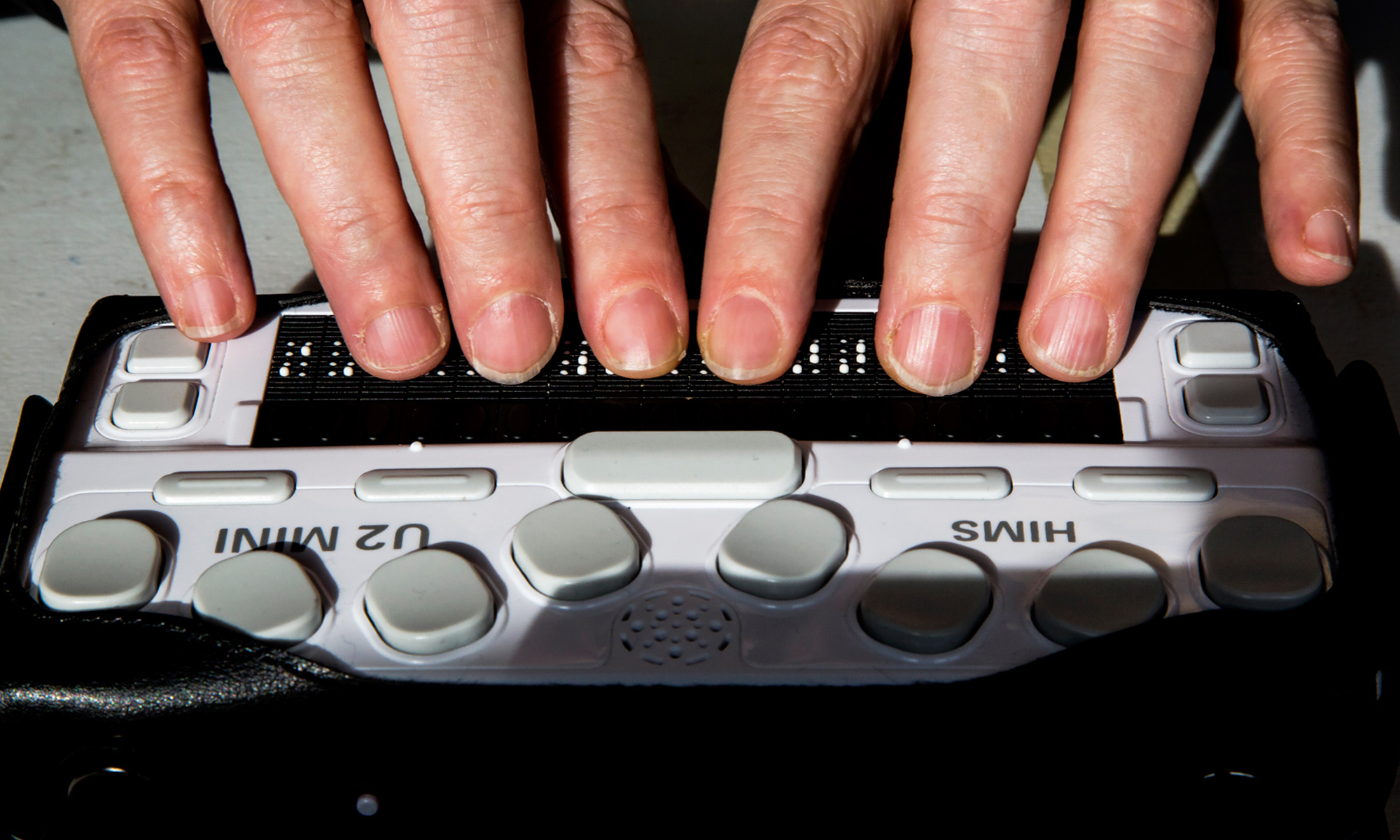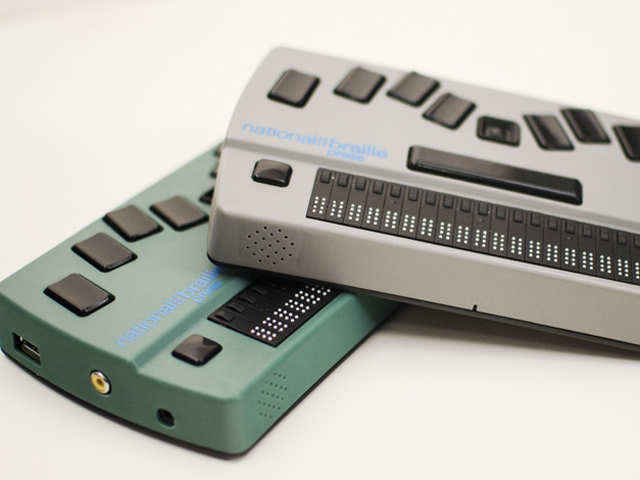Empowering Freedom With Assistive Innovation for the Blind
The assimilation of assistive modern technology into the lives of people with visual problems stands for a considerable improvement in advertising self-reliance and self-sufficiency. From ingenious display viewers to innovative smart walking sticks, these devices not just enhance daily navigating and interaction but also empower customers to involve meaningfully in numerous facets of life. As we check out the myriad advantages and real-world applications of these technologies, it ends up being vital to take a look at the underlying elements that contribute to their effectiveness and the possibility for future advancements in this important field.
Summary of Assistive Modern Technology

The growth of assistive technology is based in principles of inclusivity and empowerment. Advancements in software, hardware, and sensory enhancements supply individuals with choices customized to their details requirements. From display readers that transform text to speech, to tactile tools that communicate information via touch, these tools transform the means individuals involve with their surroundings.
Along with sensible applications, assistive innovation fosters better social addition and engagement in numerous industries, consisting of education and employment (Assistive technology for the blind). As study and growth proceed to develop, the potential for assistive technology to additionally improve the lives of aesthetically damaged people stays encouraging, leading the way for a more equitable culture where everybody can flourish
Kinds of Assistive Gadgets
A selection of assistive devices have arised to sustain individuals with visual problems, each designed to satisfy details needs and improve day-to-day performance. These devices range from low-tech options to modern technologies, giving diverse choices for individuals.
Low-tech tools consist of magnifiers and large-print materials that assist in reading and writing. Braille devices, such as Braille stylus pens and slates, enable tactile reading and communication. Positioning and mobility aids, like white walking sticks, assist individuals browse their setting securely.
On the greater end of the range, digital magnifying systems and screen readers offer significant assistance. Digital magnifiers permit customers to expand message and photos on displays, while display visitors transform digital content into synthesized speech, helping with access to information on computers and mobile phones.
Smartphone applications also play a vital function, offering attributes like message acknowledgment and navigation support. Wearable technology, such as smart glasses equipped with increased fact, is arising as an appealing tool to enhance situational awareness.
Benefits of Assistive Modern Technology
The assimilation of assistive innovation substantially enhances the lifestyle for people with aesthetic disabilities. These technologies encourage individuals by advertising freedom, allowing them to navigate their settings a lot more efficiently and carry out day-to-day jobs with greater simplicity. Display viewers and magnification software program enable people to gain access to digital info, promoting professional and instructional opportunities that may have formerly been out of reach.
Additionally, assistive tools such as smart walking canes and GPS applications supply real-time navigation help, boosting wheelchair and safety and security. This increased autonomy not only enhances self-worth but likewise urges social engagement, enabling customers to participate more totally in their communities.
Assistive innovation additionally facilitates communication, assisting customers get in touch with others through voice recognition and text-to-speech applications. This capacity pop over here is essential for maintaining connections and accessing essential information.
Furthermore, the personalization options offered with lots of assistive innovations make sure that users can tailor gadgets to their details needs, further enhancing functionality and efficiency. Generally, the advantages of assistive modern technology for people with aesthetic disabilities are extensive, advertising an extra comprehensive culture where everybody can pursue their desires and objectives.
Study and Success Stories
Highlighting the transformative impact of assistive modern technology, various situation studies highlight exactly how people with visual problems have efficiently integrated these devices into their lives. One compelling instance includes an university student that utilized display reading software program to navigate on the internet resources and scholastic products efficiently. This innovation not only promoted her education and learning however additionally enhanced her self-confidence in taking part in discussions and team projects.
One more instance research study includes a professional who uses a smart device application developed for navigation and item recognition. By using this application, he has actually restored freedom in both his individual and work atmospheres, permitting him to commute independently and engage with associates extra effectively.
Furthermore, a senior citizen shared her experience with braille e-readers, which enabled her to access a large variety of literary works and stay gotten in touch with her neighborhood via publication clubs.
These success tales highlight the vital duty of assistive technology in fostering self-reliance, improving lifestyle, and advertising social combination for people with aesthetic problems (Wearable technology for low vision). By accepting these cutting-edge devices, individuals can conquer challenges and seize opportunities that add to their specialist and individual gratification

Future Patterns in Assistive Innovation
Technology in assistive technology is positioned to redefine the landscape of assistance for individuals with visual problems. Arising trends highlight the combination of expert system (AI) and equipment learning, which improve the performance of tools that assist with navigation and info access. For instance, AI-driven applications are now qualified of analyzing visual data in real-time, allowing users to involve with their atmosphere a lot more individually.
In addition, the growth of wearable modern technology is progressing quickly. Smart glasses geared up with augmented reality (AR) can provide audio summaries of environments, transforming how users interact with resource public areas. These tools not only advertise autonomy however also foster social inclusion.
Furthermore, the Internet of Things (IoT) is making homes smarter, permitting smooth connection between everyday devices and assistive gadgets. This connectivity encourages individuals by making it possible for voice-activated controls and automatic responses tailored to specific requirements.
Final Thought
Finally, assistive innovation plays a crucial role in empowering people with visual problems by improving their independence and interaction with their surroundings. The varied series of devices and applications available not just promotes navigating and communication yet also advertises social integration and possibilities for professional and individual development. As improvements continue in this field, the possibility for boosting the top quality of life for those with visual disabilities will certainly expand, cultivating greater autonomy and empowerment.
